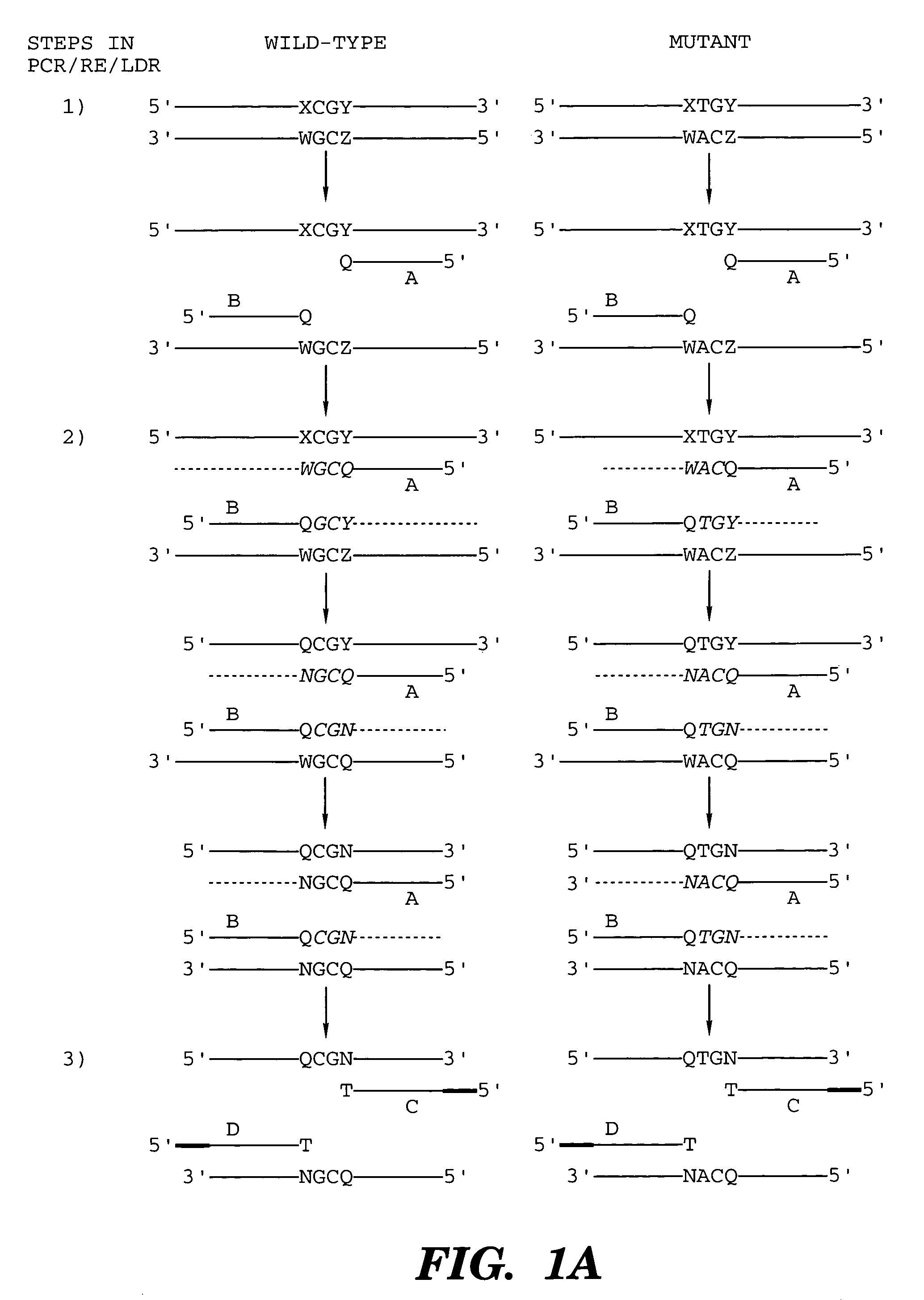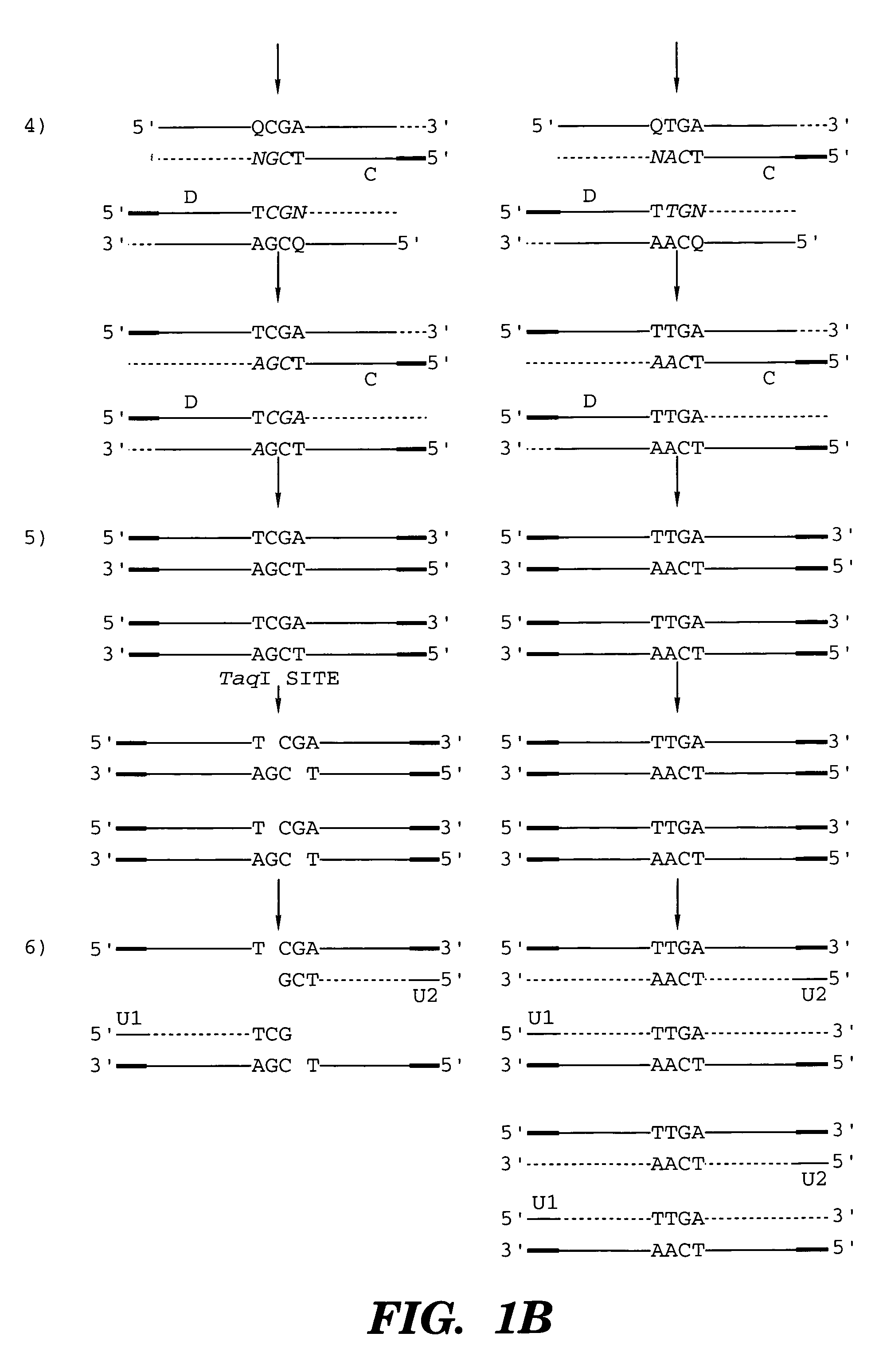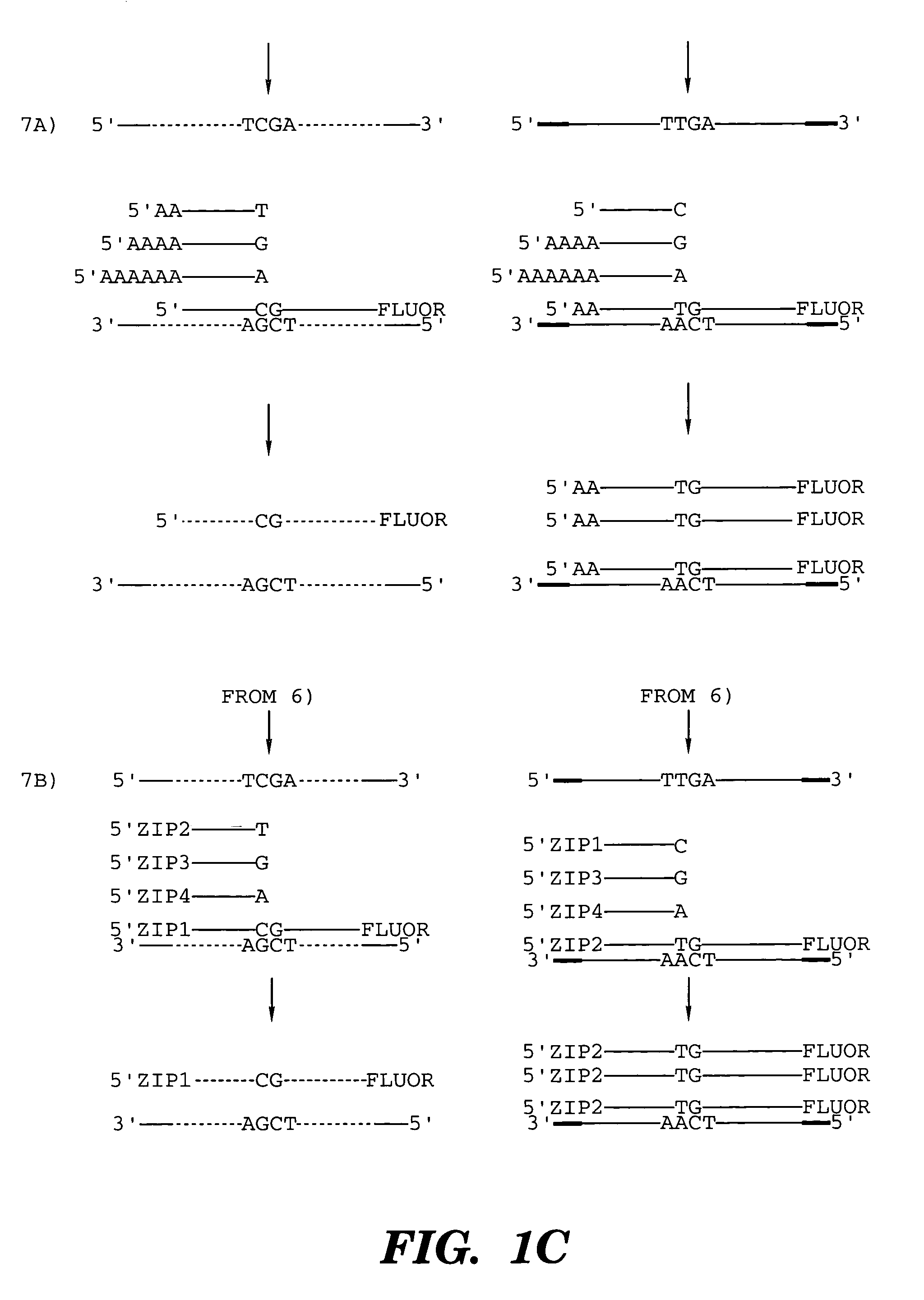Coupled polymerase chain reaction-restriction-endonuclease digestion-ligase detection reaction process
a technology of restriction endonuclease and detection reaction process, which is applied in the field ofcoupled polymerase chain reactionrestriction endonuclease digestion ligase detection reaction process, to achieve the effect of high sensitiveness
- Summary
- Abstract
- Description
- Claims
- Application Information
AI Technical Summary
Benefits of technology
Problems solved by technology
Method used
Image
Examples
example 1
Oligonucleotide Synthesis for Analog Efficiency
[0115]Oligonucleotides were synthesized at the 0.2 μmole scale by cyanoethyl phosphoramidite chemistry on an Applied Biosystems 394 DNA synthesizer. Standard 500 Å CPG columns and reagents (Applied Biosystems) were used with the following exceptions: oligonucleotides 50 bases in length were synthesized using wide-pore 1000 Å CPG columns (Applied Biosystems); oligonucleotides with fluorescent dye FAM at the 5′ terminus were synthesized using FAM phosphoramidite (Applied Biosystems) with a 15 minute coupling step; oligonucleotides with 5′ phosphate were synthesized using phosphorylation reagent (Glen Research), with a 15 minute coupling step; oligonucleotides with 3′ blocking group were synthesized using Y-Spacer CPG columns (Glen Research). Oligonucleotides with the 3′ nucleotide analogs 2′-deoxyinosine Q5), 6-(2′-deoxy-β-D-ribofuranosyl)-6H, 8H-3,4-dihydropyrimido[4,5-c][1,2]oxazine-7-one (Q6), and 2-amino-7-(2′-deoxy-β-D-ribofuranosyl)...
example 2
PCR Polymerases and Buffers
[0116]The DNA polymerases used were AmpliTaq, AmpliTaq—Stoeffel Fragment, AmpliTaq—Fluorescent Sequencing (Applied Biosystems), Vent and Vent(exo−) (New England Biolabs), and Expand polymerase mix (Taq and Pfu polymerase mixture, in Expand High Fidelity kit, Boehringer Mannheim). The commercially available PCR buffers used were supplied in the AmpliTaq and Expand High Fidelity kits. An alternative buffer CiNF, buffer G(f), is described elsewhere (Day et al., Nucleic Acids Res, (1999)). Briefly, CiNF reactions contain 20 mM citrate pH 7.6, 200 μg / ml bovine serum albumin, 2.5 mM MgCl2, 200 μM dNTP (each) and either 16 mM (NH4)2SO4, or 50 mM potassium acetate, 10% formamide, primers, and template DNA. All PCR and LDR reactions described below were performed under paraffin oil.
example 3
Mismatch Extension Efficiency
[0117]Primers containing natural bases and nucleotide analogs were used in PCR to compare and measure the efficiency of product formation from synthetic duplex p53 exon 7 templates having MspI (CCGG), TaqI (TCGA), HhaI (GCGC), or TaiI (ACGT) sites at the MspI position containing codon 248. The primers hybridized to wild-type sequence on either side of the MspI site with the 3′ ends of the primers extending one base into the site on each side, see FIG. 6A. Eight different analogs and the four natural bases were tested in parallel reactions on each of the four synthetic templates. PCR was performed using Stoeffel Taq or Taq-Fluorescent Sequencing polymerases with the buffer supplied by manufacturer for each polymerase. 10 pmol of each primer and 20 fmol of duplex template were used, and 0.2 mM each dNTP and 4 mM MgCl2. Parallel reactions underwent 10, 20, 30, 40, and 50 PCR cycles of 94° C. for 15 sec, 65° C. for 1 min. Efficiency and yield were determined...
PUM
| Property | Measurement | Unit |
|---|---|---|
| Molar ratio | aaaaa | aaaaa |
| Electrophoretic mobility | aaaaa | aaaaa |
Abstract
Description
Claims
Application Information
 Login to View More
Login to View More - R&D
- Intellectual Property
- Life Sciences
- Materials
- Tech Scout
- Unparalleled Data Quality
- Higher Quality Content
- 60% Fewer Hallucinations
Browse by: Latest US Patents, China's latest patents, Technical Efficacy Thesaurus, Application Domain, Technology Topic, Popular Technical Reports.
© 2025 PatSnap. All rights reserved.Legal|Privacy policy|Modern Slavery Act Transparency Statement|Sitemap|About US| Contact US: help@patsnap.com



